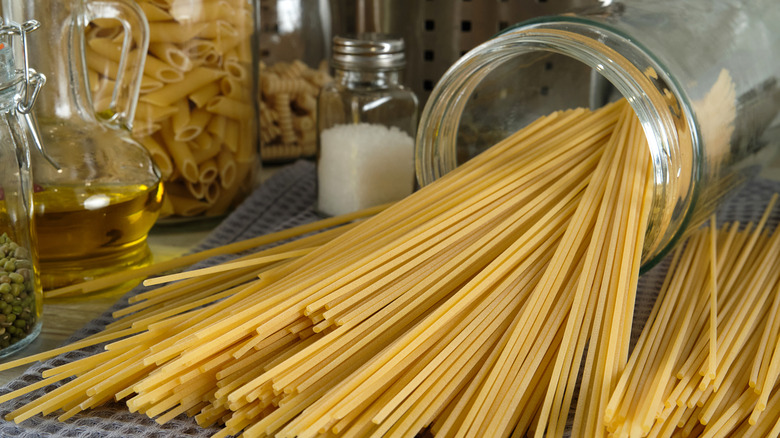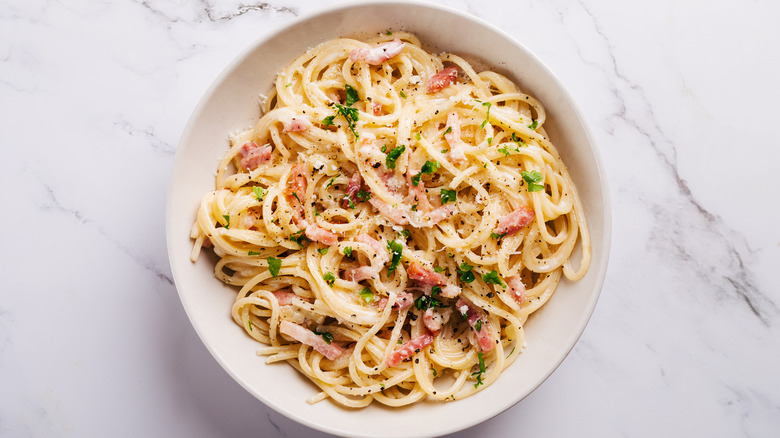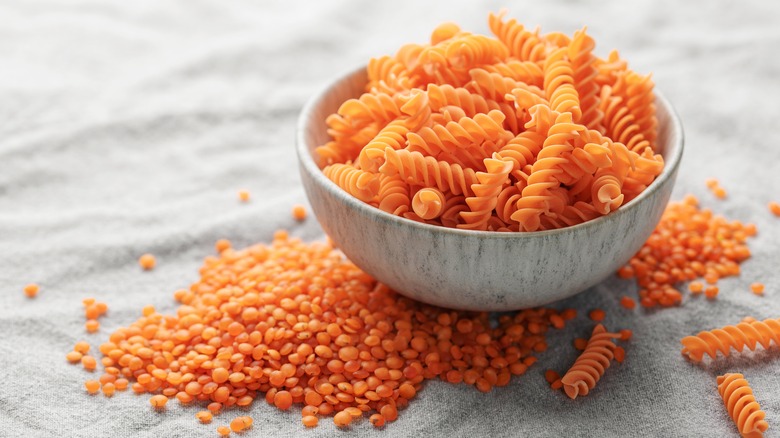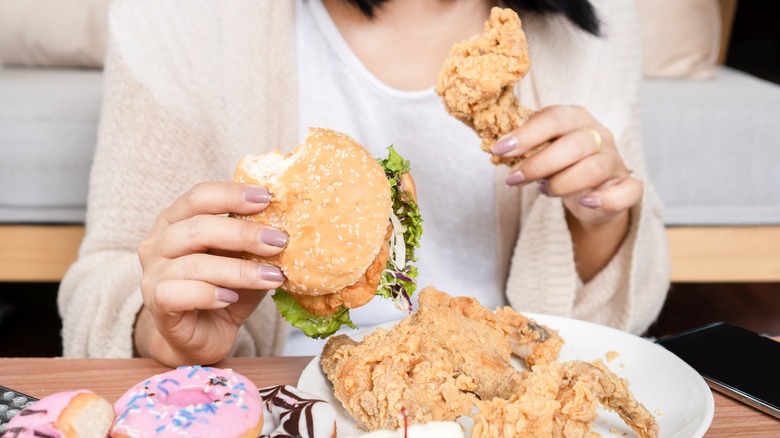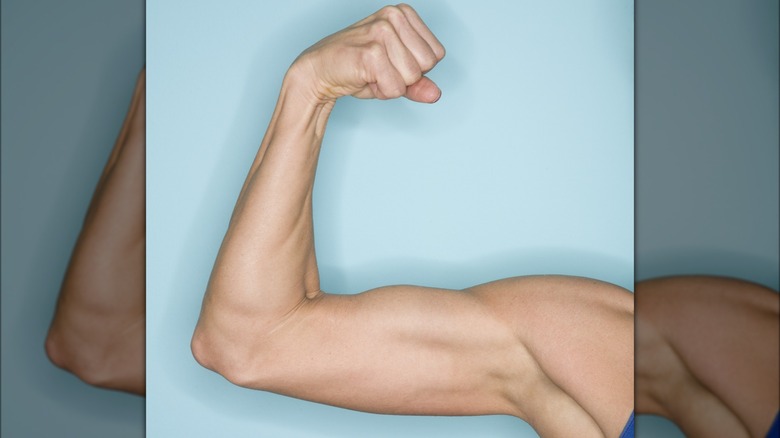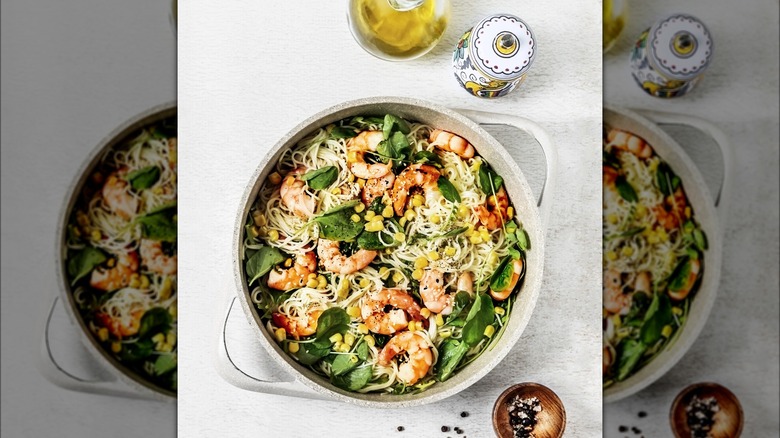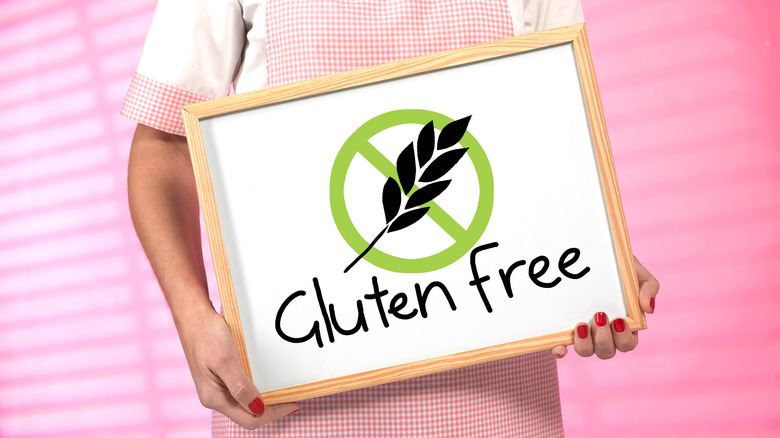High-Protein Pasta Vs Traditional Pasta: Which Should You Buy?
Who doesn't love a hearty bowl of pasta? There are so many delicious pasta recipes out there that can be a filling and nutritious meal for you and your family. Most people tend to stick to the traditional variety that commonly fills the shelves at the grocery store. Other people, however, choose a high-protein pasta instead.
There are many reasons why someone might opt for the high-protein alternative. They may be focusing on incorporating more protein into their diet for health reasons; they may have a wheat allergy; or they may just prefer the taste. High-protein pasta may not have been on many people's radars until recently, as more and more brands are popping up with their own variations of the food. In the past several years, the interest and need for high-protein pasta has grown.
Both types of pasta can be good for your health and provide a delicious, satisfying meal. As a certified nutrition coach, I am able to share my knowledge to help our readers become more confident in the type of pasta they are buying. With some insight from Shira Jackman, another nutrition coach and fitness expert, as well as Dr. Paunel Vukasinov, a dual board-certified Internist and Obesity Medicine Specialist, we've got you covered for all of your questions about traditional pasta versus high-protein pasta.
What type of pasta is considered traditional?
When most people think of traditional pasta, they might think of a fancy Italian restaurant with a perfect plate of spaghetti garnished with tomato and Parmesan cheese. Legend has it that Marco Polo brought pasta to Italy after his explorations around the world — however, historical records show that pasta was seen in Italy before that. Its origins can actually be traced all the way back to 3,000 B.C, when people in China were making a food similar to noodles. Still, the Italians are truly at the helm of modern-day pasta, and they have popularized the food with iconic dishes that are now eaten around the world.
Pasta can come in all shapes and sizes — from classic spaghetti to rigatoni, penne, bow ties, elbow macaroni, and more. There are endless dishes to create with this wheat-based carbohydrate. You can create homemade pasta from two ingredients: soft flour and water. Some people use eggs as well, but generally, that's all that is needed. Pasta made with those ingredients can be found at any Italian restaurant throughout the U.S., or on the streets of Italy itself. There are also endless pasta brands that are sold in grocery stores, all of which sell traditional pasta.
What type of pasta is high-protein?
High-protein pasta can be made using a variety of protein sources. For example, Barilla has an entire line of pasta called "Protein Plus," which it sells in several different shapes. This pasta is still made with wheat flour, but it also contains lentil flour, pea protein, chickpea flour, barley flour, and spelt flour — all of which increase the amount of protein in the product.
There are many other types of high-protein pastas out there as well. For example, the Explore Cuisine brand offers pasta made of red lentils, green lentils, black beans, chickpeas, or edamame. These products rely on protein that comes from legumes, which is a great source of plant protein. Most of those pastas are simply made by mixing lentil or bean flour with some water. Plenty of brands sell their own versions, jumping on the bandwagon and making high-protein pasta an easily accessible option for consumers.
Some people prefer the taste of traditional pasta
One thing to know about buying other forms of pasta is that you may not like the taste. Although high-protein pasta is still considered pasta, it does tend to have a different taste and texture from the traditional wheat pasta you're used to.
I have firsthand experience seeing a group of people as they were introduced to high-protein pasta. I made my favorite pesto pasta dish for my family one evening and used lentil pasta instead of traditional pasta. I personally love the taste of lentil pasta — it's my default for all of my pasta dishes. I had gotten so used to the taste and texture that I didn't realize that my family would notice a difference.
As everyone finished their first bites, I awaited their words of praise for the meal. Instead, a few shifty eyes met mine, and my father finally asked, "What kind of pasta is this?" My family went on to explain that the texture seemed a bit tougher than regular pasta, and it had more of a distinct flavor compared with traditional pasta, which tends to blend in with whatever sauce is on top. Other forms of protein pasta, like chickpea and black bean, typically have a mushier texture than pasta made with wheat flour. Most people prefer the texture of traditional pasta because it's not too hard and not too soft.
Traditional pasta can raise blood sugar
One concern with eating traditional pasta is that it can affect blood sugar. When speaking with Dr. Paunel Vukasinov, dual board-certified Internist and Obesity Medicine Specialist, he shared this concern: "Traditional pasta, made primarily from refined wheat flour, is a high-carbohydrate food. When consumed, it is broken down into glucose, leading to a rapid increase in blood sugar levels."
Now, why do blood sugar levels matter? If they spike, such as when eating a lot of traditional pasta, that could be dangerous for someone who either has diabetes or is at risk for developing diabetes. It takes a lot of insulin to bring high blood sugar down, and people with diabetes cannot make the insulin on their own.
Another reason to be aware of spikes in blood sugar is that what comes up must come down. Generally, if something spikes pretty quickly, it'll also drop quickly. Now, when there is a drop in blood sugar, that can lead to intense food cravings which lead us to overeat. Have you ever had a delicious pasta dinner that filled you up completely ... and then a few hours later, as you're going to sleep, your stomach is already gnawing at you? That's because your blood sugar has quickly dropped.
High-protein pasta can prevent cravings
High-protein pasta can have the opposite effect on people when it comes to cravings. This is because the macronutrients are a bit more balanced in a bowl of high-protein pasta versus traditional pasta. Instead of just eating carbohydrates, you are eating a meal rich in protein as well as fiber.
Dr. Paunel Vukasinov shares, "High-protein pasta is often made from legumes, chickpeas, or added protein sources like pea protein or egg whites. This composition results in a lower glycemic index compared to traditional pasta. The higher protein content slows down the digestion and absorption of carbohydrates, leading to a more gradual increase in blood sugar levels." If blood sugar is kept stable, food cravings should stay in check. A study published in the Journal Obesity in 2012 looked at the connection between protein intake and late-night cravings in overweight men. The results showed that the men who increased their daily protein intake experienced a reduction in cravings.
Since cravings can be directly related to blood sugar levels, it's also safe to say that a high-protein pasta option will be better for someone with diabetes. Focusing on eating foods that help maintain blood sugar is important for any diabetic, so having a high-protein option is a great way to still enjoy pasta while keeping spikes in blood sugar and cravings at bay.
High-protein pasta helps maintain or increase muscle mass
Whether or not you're an athlete, increasing or at least maintaining muscle mass can aid in your overall health. Not only does it feel empowering to be physically stronger, but having more muscle mass can make you feel good in many ways. The more muscle mass you have, the more calories you can burn throughout the day (making your metabolism faster). Maintaining muscle mass is also important as we age. Lack of muscle mass is one of the most common reasons for falls in the elderly. If you focus on maintaining strength through exercise and supporting it with proper high-protein foods, you will remain strong as you age.
Now, the act of gaining muscle does take effort both in the gym and in the kitchen. Shira Jackman, certified nutritionist and personal trainer, cracked down on the numbers for us: "Muscle protein synthesis, the process by which the body repairs and builds your muscle proteins, requires 30-50 grams per meal in order to be triggered. As a nutrition coach, nearly every new client I work with realizes how hard it can be to make sure they're hitting this number consistently. Because of this, high-protein pastas could be a great tool for someone," she says. For example, lentil pasta can easily add 20 to 25 grams of protein to your meal. If you pair that with a lean meat like chicken or shrimp, you can easily double that amount.
Traditional pasta is better for quick energy
If you were on the school track or cycling teams growing up, you probably remember having pasta parties the night before a big competition. It's a beloved tradition that has some fair reasoning behind it. Carb-loading is when you eat a large amount of carbohydrates in order to store the energy as glycogen in your muscles. Therefore, you'll have lots of energy ready to go in the morning for your race.
Traditional pasta is made from white flour, which is a simple carbohydrate. When digested, simple carbohydrates are sent as immediate energy sources into the bloodstream. Complex carbohydrates, which you would find in protein-pasta or whole grain pasta, take longer to digest and are introduced into the bloodstream at a slower rate. For someone who is incredibly active and needs that energy quickly for any type of endurance sport, a simple carbohydrate like traditional pasta can do the trick.
If you are looking for a large amount of carbohydrates but also want protein to help prevent blood sugar spikes, just add chicken to the dish to round it out. That way, it's the best of both worlds.
High-protein pasta tends to have more fiber
Fiber is a necessary nutrient that we all need to include in our daily diet. Most commonly, fiber comes from vegetables, fruits, whole grains, and legumes. People who don't eat a diet rich in those whole foods tend to lack the fiber intake their bodies need. When that happens, they may experience digestive issues, higher cholesterol, higher blood sugar, and weight gain. There's a reason that doctors and physicians stress the importance of getting enough fiber in your diet.
Another great benefit to having meals with high amounts of fiber is the fact that it helps keep you full. Since it takes longer for the digestive system to process, your brain won't receive hunger cues nearly as early as it would if you had eaten a low-fiber meal, which would be digested fairly quickly.
When looking at the numbers, high-protein pasta has significantly more fiber than traditional pasta. In a 56 gram serving size, the Barilla traditional penne pasta has 3 grams of fiber, while the Barilla red lentil penne pasta has double the amount. The Barilla chickpea penne pasta tops that with 8 grams of fiber per serving. For reference, the American Heart Association recommends that adults consume between 25 and 30 grams of fiber per day. Every gram counts, and comparing 3 grams of fiber from traditional pasta versus 8 grams of fiber from a high-protein chickpea pasta is no contest.
Traditional pasta is healthier when paired with other foods
We've uncovered quite a few downsides to eating traditional pasta, due to its lack of protein and fiber. It can make your blood sugar spike, it's less satiating which could lead to overeating, and it doesn't aid in maintaining muscle mass. The good news is you can amp up your traditional pasta dish to help round out your meal.
Your digestive system works more efficiently when you have a good balance of macronutrients (carbohydrates, fats, and proteins) in a meal. Traditional pasta alone is practically just carbohydrates — so let's add some bulk to your plate. Start by adding fiber-rich vegetables like broccoli, mushrooms, or cauliflower. Then, add in a solid protein source. Chicken, shrimp, scallops, or ground turkey are great ways to add high amounts of protein. Last, we want some healthy fats in there that will help with satiety; a drizzle of olive oil should do the trick.
It's important to remember that the pasta that's right for you will depend on your individual nutritional needs. By assessing the nutritional content in your meal, you can become more aware of what you're lacking and what you have enough of. Traditional pasta can absolutely fit into a healthy diet, as long as you adjust the meal to fit your body's needs.
High-protein pasta is a great alternative for gluten-intolerant people
A big fear for people diagnosed with celiac disease or gluten sensitivities is that they will never be able to enjoy a bowl of pasta again. Luckily, that doesn't have to be the case. There are gluten-free versions of traditional pasta, however, those options are not high-protein, averaging about 4 grams per serving. For the purpose of this discussion, we consider a pasta to be high-protein if at least 20% of the calories come from protein.
Many sources of high-protein pasta are naturally gluten-free. From lentil to almond to chickpea to black bean pasta — there are tons of options out there. These pastas can also come in all of the shapes and sizes you love, so you can recreate your favorite pasta dishes. Angel hair, spaghetti, penne, rigatoni, and more are all available to you across different brands in a high-protein, gluten-free form. It may be an adjustment taste-wise when transitioning from traditional pasta to these high-protein, legume-based pastas, but after awhile you won't notice the difference. Trader Joe's, Explore, Barilla, and Whole Foods all carry high-protein gluten free pastas, so check them out on your next grocery run.
Shira Jackman shared her appreciation for the accessibility of legume based high-protein pastas. "For someone who has insulin sensitivity, is diabetic, is gluten-intolerant, or eats a solely plant-based diet, Banza and similar legume-based pastas are an amazing option."
Both options can fit in a well-balanced diet
When taking a step back and objectively looking at both options, traditional pasta and high-protein pasta deserve a spot at the table of a well-balanced diet. They offer substantial health benefits in their own way, and though traditional pasta doesn't have as many benefits as high-protein pasta, there are ways to round out the meal to make it complete.
Shira Jackman shared a great insight with us: "As a nutrition coach, one of my primary jobs is to help my clients get out of the binary of 'good' vs. 'bad' foods and to build a sustainable relationship with food that works for them for the long-term. Because of this, I would recommend both traditional and high-protein pastas based on their preferences, needs, and habits." Good nutrition comes with a healthy mindset, too.
We also had the privilege of getting Dr. Paunel Vukasinov's opinion on the matter. You might assume an obesity medicine specialist would advise against traditional pasta, but that wasn't the case. He shared, "Both have their health benefits and can be part of a healthy diet. Traditional pasta provides a good source of carbohydrates, which are essential for energy, especially for those with high energy demands. High-protein pasta ... supports muscle maintenance, growth, and overall satiety. It is also a better option for those managing blood sugar levels."
